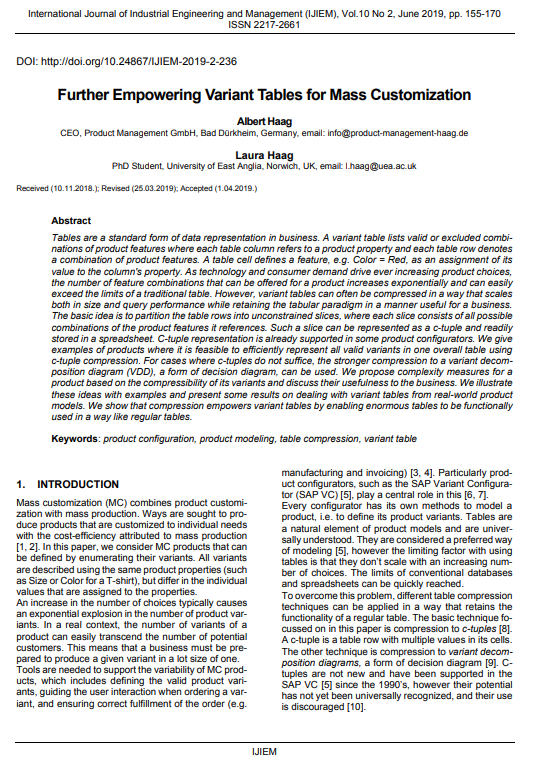
Published 2019-06-30
abstract views: 259 // FULL TEXT ARTICLE (PDF): 0
Keywords
- product configuration,
- product modeling,
- table compression,
- variant table
How to Cite
Copyright (c) 2023 International Journal of Industrial Engineering and Management

This work is licensed under a Creative Commons Attribution 4.0 International License.
Abstract
Tables are a standard form of data representation in business. A variant table lists valid or excluded combi-nations of product features where each table column refers to a product property and each table row denotes a combination of product features. A table cell defines a feature, e.g. Color = Red, as an assignment of its value to the column's property. As technology and consumer demand drive ever increasing product choices, the number of feature combinations that can be offered for a product increases exponentially and can easily exceed the limits of a traditional table. However, variant tables can often be compressed in a way that scales both in size and query performance while retaining the tabular paradigm in a manner useful for a business. The basic idea is to partition the table rows into unconstrained slices, where each slice consists of all possible combinations of the product features it references. Such a slice can be represented as a c-tuple and readily stored in a spreadsheet. C-tuple representation is already supported in some product configurators. We give examples of products where it is feasible to efficiently represent all valid variants in one overall table using c-tuple compression. For cases where c-tuples do not suffice,the strongercompression to a variant decom-position diagram (VDD),a form of decision diagram, can be used. We propose complexity measures for a product based on the compressibility of its variants and discuss their usefulness to the business. We illustrate these ideas with examples and present some results on dealing with variant tables from real-world product models.We show that compression empowers variant tables by enabling enormous tablesto be functionally used in a way like regular tables.
Article history: Received (10.11.2018); Revised (25.03.2019); Accepted (1.04.2019)

